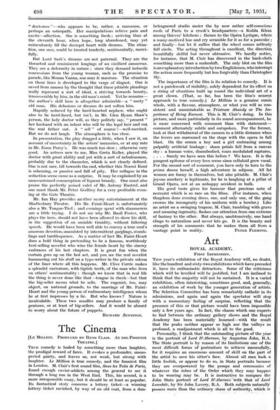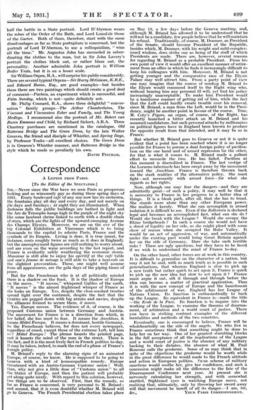Art
ROYAL ACADEMY.
FIRST IMPRESSION.
THIS year's exhibition of the Royal Academy will, no doubt, like the hundred and sixty-two exhibitions which have preceded it, have its enthusiastic detractors. Some of the criticisms which will be levelled will be justified, but I am inclined to think that the majority will not be sustained. It is a varied exhibition, often interesting, sometimes good, and, generally, an exhibition of work by the younger generation of artists. The 'Selection Committee has been remarkably catholic in its admissions, and again and again the spectator will stop with a momentary feeling of surprise, reflecting that the presence of this or that picture would have been impossible only a few years ago. In fact, the chasm which one expects to find between the ordinary gallery shows and the Royal Academy has been materially lessened—with the result that the peaks neither appear so high nor the valleys so profound, a readjustment which is all to the good.
Personally, I think that the outstanding picture of the year is the portrait of Lord D'Abernon, by Augustus John, R.A. The State portrait is by reason of its limitations one of the most difficult forms oV portraiture to achieve successfully, for it requires an enormous amount of skill on the part of the artist to save his sitter's face. Almost all men look a little foolish, or appear to do so, in State portraits because they are overpowered by the pomps and ceremonies of whatever the robes of the Order which they may happen to be wearing may be. It is instructive to compare the John State portrait of Lord D'Abernon with that of Lord Lonsdale, by Sir John Lavery, R.A. Both subjects naturally possess more than the ordinary share of authority, which is
half the battle in a State portrait. Lord D'Abernon wears the robes of the Order of the Bath, and Lord LOitsdale those of the Garter. Both of them, therefore, start with the same disadvantages as far as State portraiture is concerned, but the portrait of Lord D'Abernon, to use a colloquialism, "wins all the time." Mr. Augustus John has succeeded in subor- dinating the clothes to the man, but in Sir John Lavery's portrait the clothes block out, or rather blaze out, the personality. Another admirable John portrait is William Butler Yeats, but it is on a lesser scale.
Sir William Orpen, R.A., will surprise his public considerably. There are several typical Orpens—Sir Harry McGowan, K.B.E., and Edward Baron, Esq., are good examples—but besides these there are two paintings which should create a good deal of comment—Pavlova, an experiment which is successful, and Palm Sunday, which is not—quite definitely not.
Mr. Philip Connard, R.A., shows three delightful " conver- sation " family groups—The Arthur Chamberlains, The Viscount and Viscountess Esher and Family, and The Young Medleys. I recommend also the portrait of Mr. Robert van Buren Emmons and Child, by Richard Sickest, A.R.A. Three Chantrey purchases are mentioned in the catalogue, Old Battersea Bridge and The Green Dress, by the late Walter Greaves, the friend and disciple of Whistler, and Spring Days, by Professor Tonks—all excellent choices. The Green Dress is in Greaves's Whistler manner, and Battersea Bridge in the style which he made so peculiarly his own.
DAVID FINCHAM.





































 Previous page
Previous page